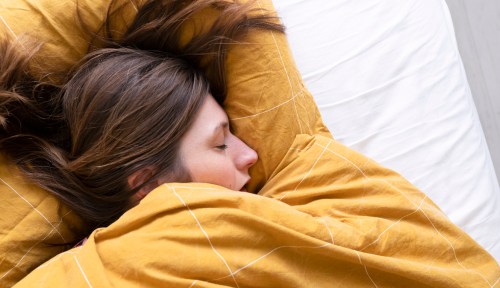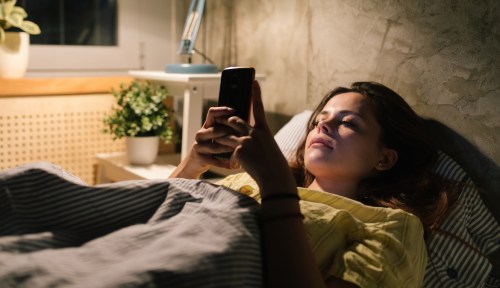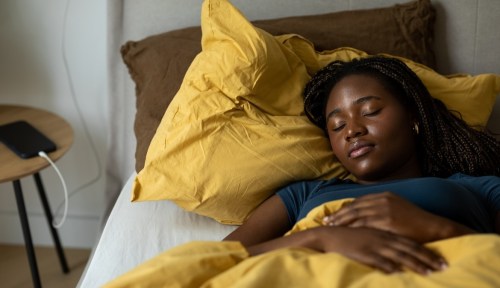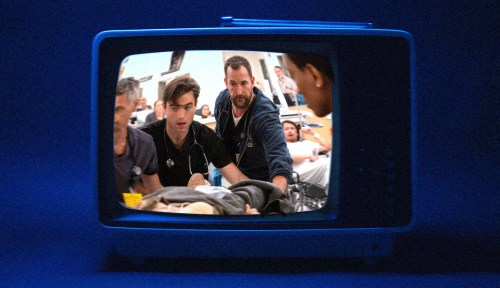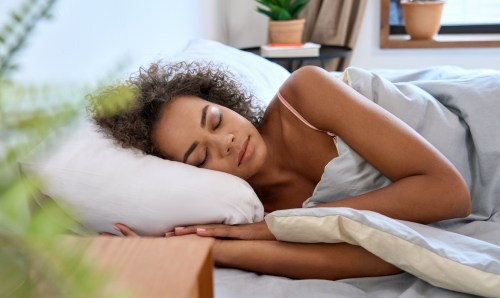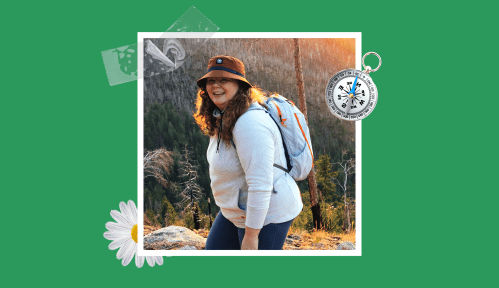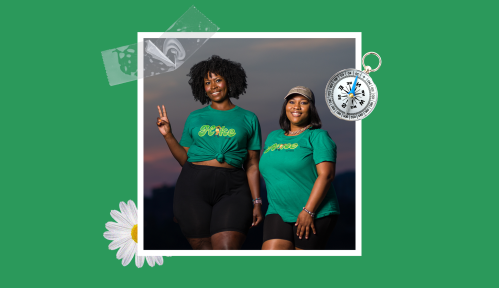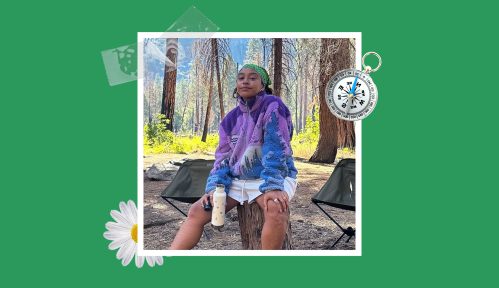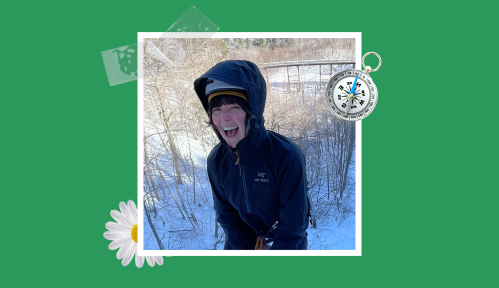When you’re ready to hit the hay, you might follow a chain of events that looks something like the following: turn off the light, put your head on your pillow, get under your comfy sheets, and try to fall asleep. But from there, things may start to feel out of your hands. While tips and tricks abound to go from fully awake to dreaming, there are all kinds of things that can stop you from reaching the deepest levels of sleep. With this lack of control in mind, how can you know how long does it take to dream after falling asleep?
Experts in This Article
co-director of the University of Washington Medicine Sleep Center
Well, just like the process of waking up functions like more of a dimmer than a stark on-off switch, so, too, does the process of falling asleep and dreaming, says sleep doctor Nathaniel F. Watson, MD, MSc. According to Dr. Watson, even if you fall asleep as soon as you lay down, it’ll still take you between 70 and 90 minutes to start dreaming. But, normal sleep latency—aka how long it takes you to fall asleep—is 30 minutes after turning out the lights. So with that in mind, for many people, the dreaming portion of the sleep cycle will start between 100 and 120 minutes after you knock out, he adds.
According to sleep doctor Nathaniel F. Watson, MD, even if you fall asleep as soon as you lay down, it’ll still take you between 70 and 90 minutes to start dreaming.
Additionally, sleep comes in cycles, he says, and this happens in two overarching phases: non-REM sleep and REM sleep—and REM sleep is typically when dreaming occurs. “Non-REM makes up about 80 percent of the night, and REM sleep about 20 percent, roughly,” says Dr. Watson, adding that we start off in the three stages of non-REM sleep—N1 (relatively easy to wake from), N2 (a bit harder to wake from), and N3 (most difficult to wake from)—before going into REM sleep, aka dreamland. As such, if you don’t reach this REM stage of sleep, you likely will have no dreams.
But if the answer to how long it takes to dream after falling asleep is is 70 to 90 minutes for those who fall asleep immediately and 100 to 120 minutes after assuming a normal sleep latency of 30 minutes, where does that leave those of us who don’t fall asleep within a half hour? According to Dr. Watson, it comes down to simple math.
Let’s say you’ve had a particularly stressful day, and it took you two hours (120 minutes) to quiet your busy mind and finally fall asleep. You’d still reach REM 70 to 90 minutes after falling asleep, but because it took you longer to actually start snoozing, you’d reach REM and start dreaming approximately between three and three-and-a-half hours after that (at 190 to 210 minutes).
If you, like me, are wondering how to track how long it takes you to fall asleep if, well, you’re asleep, Dr. Watson suggests turning to sleep-tech tools. “Nowadays, we can measure [how long it takes us to fall asleep] with consumer sleep technologies and have a better idea.” (To name just some of these sleep tools, check out the Oura Ring, an Apple Watch, Whoop, and the Eight Sleep Mattress.)
However, since sleep is, again, highly individualized and affected by myriad factors—like, say, your age and maybe even astrological transits—it’s worth noting that there are also certain things that can cause REM sleep to occur earlier than usual in a sleep cycle, Dr. Watson adds. (One example is type one narcolepsy, a chronic sleep disorder characterized by overwhelming daytime drowsiness and sudden sleep, which can lead REM sleep to happen earlier in a sleep cycle. If you suspect you are expressing symptoms like these, seek the advice of a medical professional.)
While there is ultimately no hard-and-fast rule for how long it takes to dream after falling asleep, based on what you know about yourself, you can probably get a sense of when you typically may start the stage of sleep when it may occur. And since strong sleep health is key for leading a well life, it’s important to understand the timeframe for how long it may take you to go from awake to dreaming, so you can make sure you clock enough hours in bed each night.
Oh hi! You look like someone who loves free workouts, discounts for cutting-edge wellness brands, and exclusive Well+Good content. Sign up for Well+, our online community of wellness insiders, and unlock your rewards instantly.
Sign Up for Our Daily Newsletter
Get all the latest in wellness, trends, food, fitness, beauty, and more delivered right to your inbox.
Got it, you've been added to our email list.
